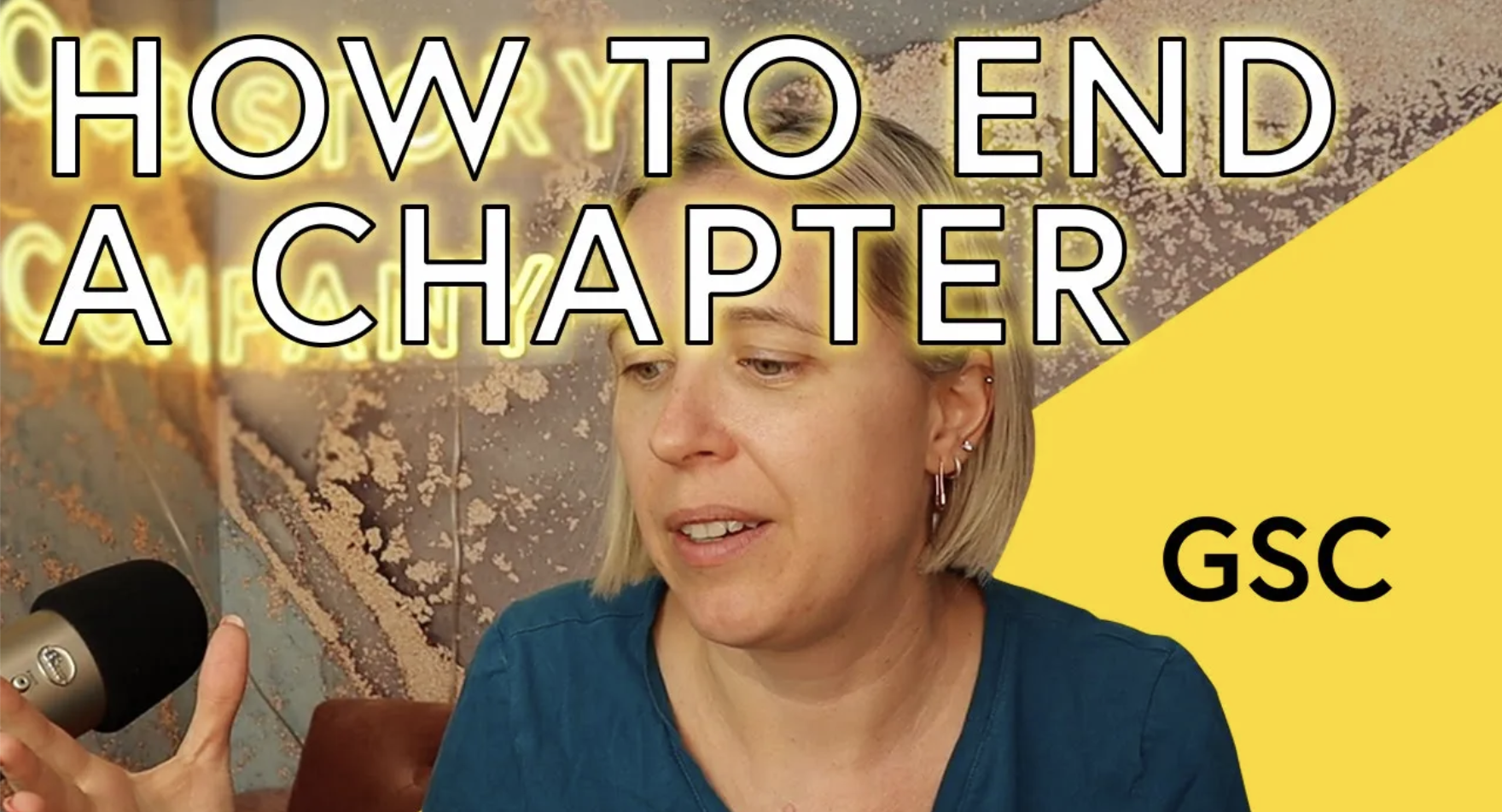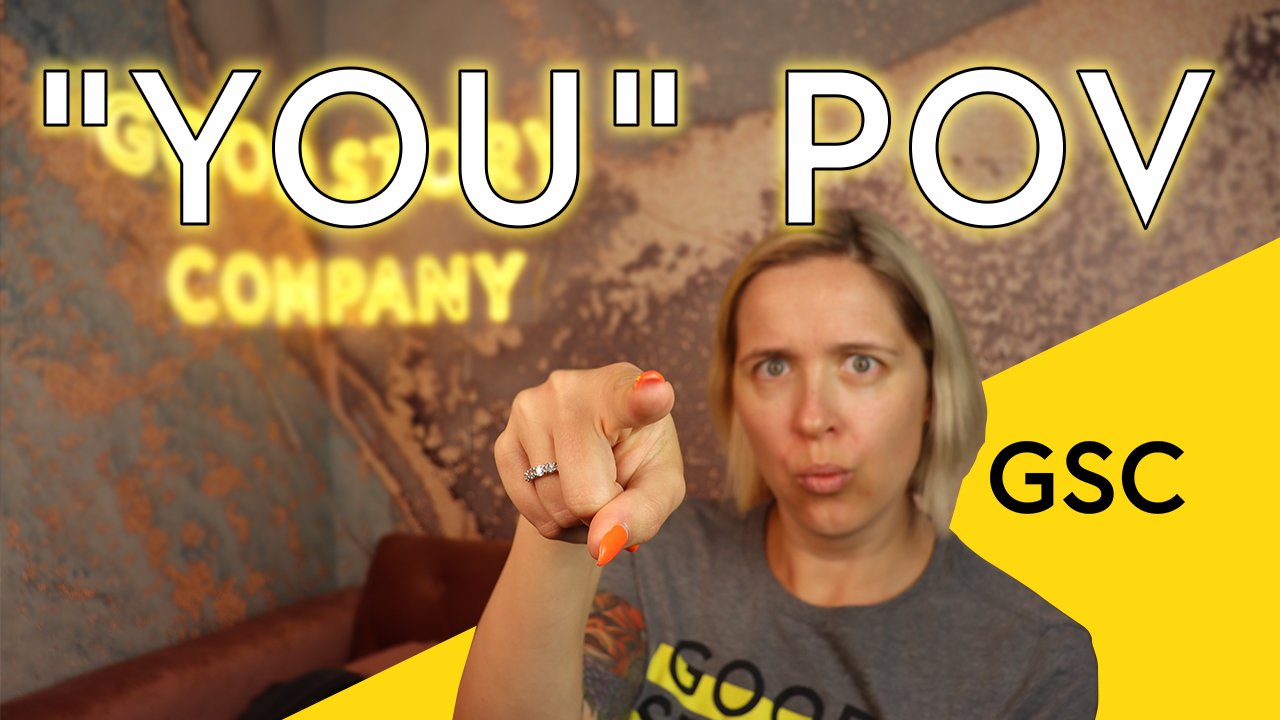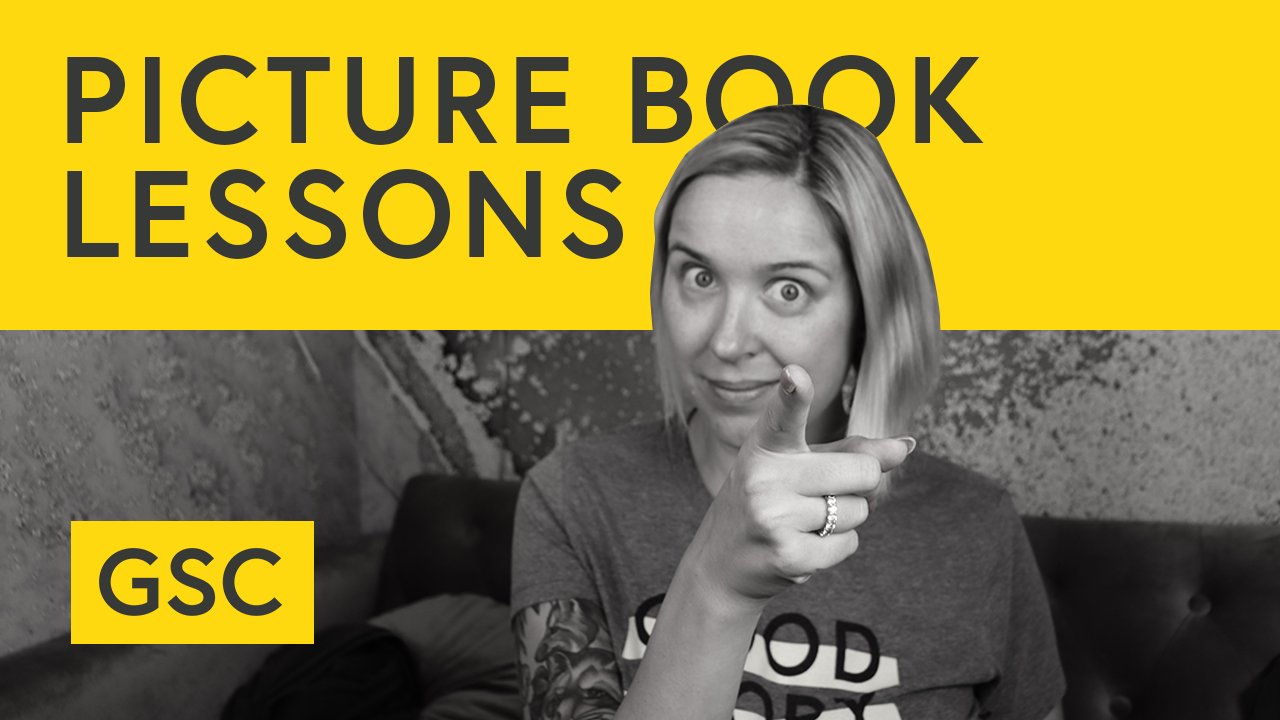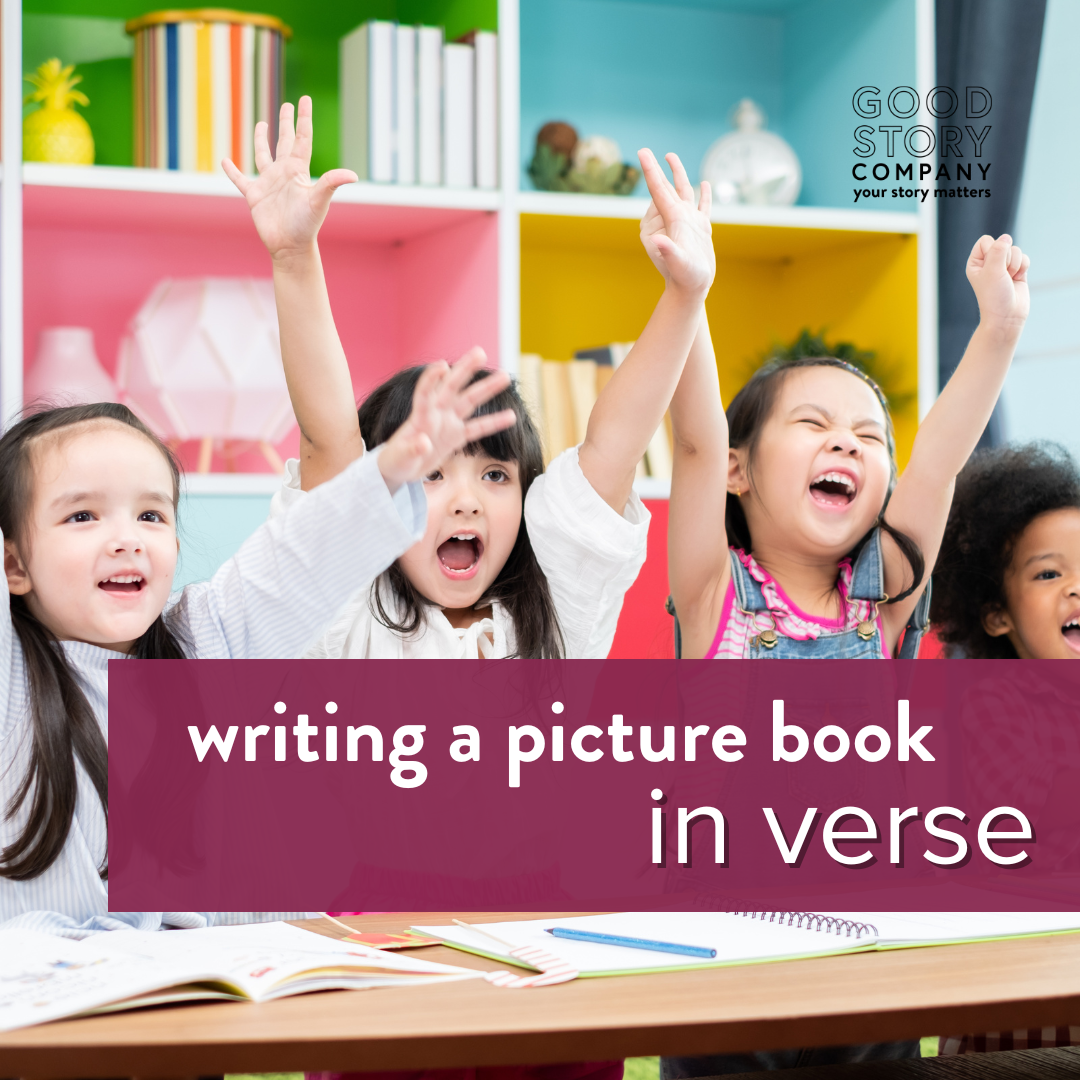
MANUSCRIPT FORMATTING Template
Formatting your picture book manuscript doesn’t need to be intimidating. This template will outline the basics for prose and rhyme, from page turns to dialogue formatting.

Upcoming Webinars
This inspiring, creative webinar is a great way to get in the right frame of mind for a successful writing year. There's advice here for writing, creativity, and living a more artistic life in general.
Videos
NYT bestselling author/illustrator Jarrett Krosoczka shares the challenges and gratifications of reaching across different age categories and the importance of illustrations in storytelling. Listen to hear his tips on writing within established franchises (like Star Wars), how to pivot a picture book idea into a graphic novel series, and memoir writing.
Danielle Marietta joins the podcast to discuss Books & Things Publishing, the children’s book sphere, and the importance of promoting diverse authors. Tune in to learn more about Danielle’s writing journey, and her tips on self-publishing, social media marketing, and connecting with your target audience.
Book Marketer and PR Coach Emily Enger joins Mary to talk about some of the aspects of the writing process that might leave a yucky taste in our mouths. Tune in for actionable tips and insights into a publicist and marketer's side of the publishing world.
Approaching how to end a chapter is tricky territory. It’s very easy to lose your reader in the white space and page break there, unless you give them a reason to stay and turn the page. Distractions are always beckoning, and nowhere is your grasp on your audience more tenuous. Check out this video to learn how to end your chapters in a compelling way!
Think twice before you moralize in your book. Ditch "sharing is caring!" and go for a more nuanced message. Here's how.
In order to write, you have to WRITE! Spending time learning theory, taking classes, and reading books are beneficial, but ultimately it is practice that will make you a better writer. Learn how a million bad words can turn into a good story.
A discussion with middle grade author and Newbery medalist Erin Entrada Kelly about writing outside your lived experience.
Books that teach life lessons are fine...as long as you don't clobber readers over the head with your theme. So how do you weave a message into your story without being too obvious?
Breaking writing rules might seem like a bold artistic statement, but it could also backfire. Here are some considerations for writers who are inclined to take their projects in a more experimental direction.
This video is all about how to write a good ending to a story. Whether you are looking to be traditionally published or are writing picture books, the main key to writing a good ending is to be familiar with what your audience wants. We’ve also got you covered on writing endings for various genres—from romance to fantasy.
Anthropomorphic animals in children’s fiction are common, but are these characters the best approach when you’re writing for young readers? Let’s talk about this popular topic for children’s writers by defining what an anthropomorphic animal is.
Story Mastermind is our small group writing workshop. We'll tell you a little bit about the program, but mostly we will be talking today about picture book premise, and how to make sure that your story has strong bones and how to tell a compelling picture book story in today's market.
You do need to clear a pretty high bar to impress an agent, a publisher, or a reader once you get published. The opening pages are a really, really important part of this. Adding some character relatability and a little bit of conflict goes a long way in hooking a reader.
I would say, you can use the second-person direct address, but don't make it sloppy. Don't use it for generalizations. And there has to be a really strong reason for that choice. If you Do you hear me?
This is everybody's favorite fucking topic. It is swearing in children's books. Very controversial. Keep in mind the power gatekeepers have in children’s publishing.
Publishing loves its buckets. In children's books, there are several buckets that you need to fit into, with word count guidelines and all of that. There are buckets and tropes in adult publishing as well. Books that don't lend themselves easily to categorization can be a really difficult sell.
Don't teach in your picture book. Do not preach. Do not talk down to the reader. Kids are lectured and told what to do all day every day, and they feel disempowered. So, the strongest possible way to get a message across is to have a child go through something, learn something, practice something, maybe even teach something to somebody else, without actually coming out and directly saying the words.
Pacing is the engine that keeps that story going and keeps your reader's interest level high. One of the most important things that I teach when it comes to pacing with writing is the balance of action and the information. Information is dense. It moves slowly. Action is fast. It moves quickly. It has nothing to do with page count, but everything to do with the balance of what's in those pages.
The number one thing that you have to know about writing a kid character is that they should be relatable to kids. This seems like a very dumb thing to say, but a lot of picture books that I read are written more from the point of view of an adult or for an adult point of view.
If you've been wondering how to format interrupted dialogue in your manuscript, here's a quick answer.
Here's a video follow-up to our blog post on the old writing adage "write what you know." A closer look at what this expression really means and how you can make it work in your writing.
These descriptive writing tips will help you create impactful imagery that supports your story.
It's hard for readers to engage with a passive character, especially in the protagonist role. Here's why.
Character description in first person narration is tricky. We usually don't talk about ourselves in terms of our physical attributes. But readers appreciate having something to imagine when they're reading your story--so how do you make it sound natural?
Podcasts
Newton’s third law says every action will have an equal but opposite reaction. This is true in stories, too … or at least it should be. How do we get to know characters, even as they flit from one conflict-ridden chase scene to the next? Through reaction beats.
Your voice is unique to you. It’s how you talk; the combination of sounds, the words you choose, your sarcasm or humor, etc. Those same idiosyncrasies factor into writing voice. It’s a writer’s stylistic choices, the POV character’s personality, and the audience you’re telling the story to. So, what’s picture book voice?
Writing dialogue is tricky. It seems like it should be the simplest part of the process, because we’re all familiar with what conversations sound like. There’s a difference, though, between a conversation you might have and how to write active dialogue in your story.
Populating your world with interesting people can make readers care about your story, and writing relationships between characters can inspire them to ship, daydream, and root for your characters. Here’s how to help them come alive on the page as real, believable people.
Writer burnout is a cousin to writer’s block, with a few key differences. Both states leave you feeling like you should write, you need to write, but you just can’t. I’ll share five tips that’ll help you recover from writer burnout.
Regardless of who I’m talking to—an audience of kid readers, or a group of teachers at a workshop, the most common question I receive is: how to cure writer’s block?
Writers have a love-hate relationship with word count. It’s one of the necessary evils we deal with to determine if a manuscript meets an acceptable published length. So how long should a book be? Here’s a guide to help you answer.
Writers are often cautioned away from flashbacks, but they can connect the dots between the past and who the characters are now. Read on for tips on writing flashbacks that function well.
When done well, rhyming picture books are snappy, quotable, and fun to read. Children retain the words more easily and begin to identify patterns and sounds: a real treat. The problem? Writing a good rhyming picture book is much trickier than it looks.
We want our readers to connect emotionally to our characters and to feel their pains and struggles—but it can be tricky to know how to describe emotion to create that connection. Here are some effective ways to describe emotion.
Reactions go beyond what a character’s body does in the moment. Check this list for ideas for digging your characters out of their physical clichés and moving your story forward.
Having a daily writing practice is one of the best ways to improve your writing. The more you write, the more you’re able to learn about your style and voice. So, here are five tips to make this dream a reality.
Picture books are so fun to read aloud! Readers can play with the volume, pitch, and inflection of their voices to give the verses maximum effect.
Strong character development arcs make better stories. Here are some tips on writing characters that readers will connect with and root for.
We know a believable character when we see one. We know what they want, how they feel, and that they’ll be different at the end of the story than they were at the beginning. Here’s how to make sure they’re connecting with your reader.
Writing good sentences is at the heart of telling a good story. However, it’s not the first issue to tackle in revisions. First, finish your draft. Second, step away from your manuscript. Third, edit macro issues such as plot holes, character development, and story arc. Don’t fret about sentence craft until the bones of the story are in place and working well.
Hello. My name is Blandy. My appearance is normal. My eyes, hair, and build are ordinary. My opinions are private. My feelings are mild. I have a job in an office where I work. For leisure, I either look outside or inside. I am a boring character.
Dialogue tags are invisible and useful when done well, but they can kick a reader out of a story so quickly when they aren’t. Let's talk about which ones work, and which are less effective.
How do you write shy characters? Shy people often have rich inner worlds that are teeming with life; they’re just selective about who they let inside. Here are a few ways to help you show your shy character’s true nature.
How is a writing buddy different from a critique partner or writing partner? The terms are often used interchangeably, but I happen to think that a “writing buddy” is friendlier. So here’s how to be a good one, and boost your own critique and writing skills at the same time.
How long can a picture book manuscript be? What if mine’s much longer? Or much shorter? Will I be automatically rejected by an agent? What if my story needs those words? Are there different lengths for different types of picture book manuscripts?
Let’s answer these questions.
The act of writing theme is an important ingredient in storytelling, but it doesn’t have to resound with Meaning-with-a-capital-M. In fact, theme works best when it’s subtle and even open to interpretation. Here are three tips that’ll help you incorporate theme into your story.
Whether you’re writing a picture book, a chapter book or a middle grade novel, the star of your story is a child character. Here are some tips on how to write a believable child character.
When done right, writing realistic dialogue isn’t simple because people aren’t. Here are some tips and tricks for writing dialogue that sounds natural and fits the character who’s speaking.
An active protagonist drives the story. Meaning? Your main character should want specific outcomes and fight for them. That’s where the conflict in the story comes from: everything that fights back. For tips on activating the hero of your story, read on.
Writing female characters can be harder than you expect, as a writer, but it’s important to get right. There are some blind spots that many of us—men and women alike—have when it comes to crafting compelling female characters.
Raising the stakes is a great way to sow tension in your story, and fear of failure is something everyone can relate to. The constant battle between running toward the goal while running away from the alternative will keep readers engaged and invested in your characters. Know how to identify your stakes and when to make them bigger.
“Write what you know” is common advice, but it can feel like an attempt to limit creativity. You write to discover new places and understand different points of view. If you only write what you know, how can you write about what you don’t know?
Finding time to write can sometimes seem impossible. If you have a packed schedule due to school, your day job, or multiple day jobs, you may think it’s impossible to start your novel, let alone finish it. Here are some ways to carve out time in your day to write.
Show don’t tell is one of the first pieces of advice given to new writers. My first writing professor preached that we all STAY AWAY from exposition. Still, even with SDT etched into our minds, writers slip into exposition and description, missing opportunities to immerse their readers.
Blog Posts
Children’s author-illustrator Niña Mata joins the Thriving Writers Podcast to chat about her publishing journey—from illustrating educational materials, working with Olympian athletes, to finally writing her own stories! Listen to hear Niña share some tips on what illustrators gravitate towards in manuscripts and ways writers can make the collaborative process smoother.
NYT bestselling author/illustrator Jarrett Krosoczka shares the challenges and gratifications of reaching across different age categories and the importance of illustrations in storytelling. Listen to hear his tips on writing within established franchises (like Star Wars), how to pivot a picture book idea into a graphic novel series, and memoir writing.
Danielle Marietta joins the podcast to discuss Books & Things Publishing, the children’s book sphere, and the importance of promoting diverse authors. Tune in to learn more about Danielle’s writing journey, and her tips on self-publishing, social media marketing, and connecting with your target audience.
An interview with middle grade author and Newbery medalist Erin Entrada Kelly, where we discuss writing outside your lived experience.
Debut picture book author Brittany Thurman discusses writing about complex issues for a young audience, bias in the publishing industry, and supporting Black writers.
An interview with author and writing teacher Jessica Brody, where we discuss what makes a compelling story, how to apply story structure whether you're a plotter or pantser, and tackling large-scale revisions without ripping your hair out.
An enlightening discussion about creativity, picture book writing, illustration, inspiration, and making mistakes ... in a good way!
Gabriela Pereira discusses her journey to founding DIY MFA, the do-it-yourself alternative to a Masters degree in writing, while living with bipolar disorder. She shares tips about unconventional learning styles, finding a writing community in your backyard, and using storytelling to effectively market your work.
Writing teachers Jeff Lyons and Mary Kole in conversation about craft, from the big picture to the nitty gritty.
An interview with NaNoWriMo founder and writing teacher Chris Baty, where we discuss plot, pantsing, not nipping good ideas in the bud, celebrating a hot pile of garbage, and the cult of busyness.
On this month's episode, children's author Anna Staniszewski chats about her path to publication, writing for different age groups, and what it takes to make it as a full-time author.
New York Times Bestselling children's book author Tami Charles joins the Good Story Podcast to talk about experimenting with verse, amplifying the stories of girls of color, and writing what you feel.
Services
Show your writer friends some love!
Whether the writer in your life is just starting out or already a seasoned pro, our gift cards are the perfect way to show you care and appreciate their work. The gift cards can be used to purchase professional editing services, consulting, and coaching from Good Story Editing.
Helping writers in this genre is so much fun. You’ll get an overview of feedback on your picture book idea, plus line editing and proofreading on your manuscript.
Up to 800 words.
A great book starts with a great premise. I will give you thorough synopsis editing notes on voice, tone, content, presentation, and more. I’ll also share my thoughts on your story idea and its chances in the market.
Submit up to four double-spaced pages.
Helping writers in this genre is so much fun. You’ll get an overview of feedback on your picture book idea, plus line editing and proofreading on your manuscript.
Up to 800 words.
Helping writers in this genre is so much fun. You’ll get an overview of feedback on your picture book idea, plus line editing and proofreading on your manuscript.
Up to 800 words.
The picture book market is blazing hot, and a lot of writers are trying the fun and challenging craft of picture book writing. This is an edit of your strongest picture book manuscript and will provide you with valuable feedback about your plot, characters, illustration potential, voice, and more. Query letter editing is included, as well as feedback on up to three more paragraph-length pitches for future ideas, if you have them.
You don’t need a complete novel to benefit from editing! I’ll give you comprehensive and actionable margin notes on 100 pages of your manuscript, from big picture to sentence-level feedback.
Submit up to 100 pages, double-spaced.

FEATURED SERVICE
Helping writers in this genre is so much fun. You’ll get an overview of feedback on your picture book idea, plus line editing and proofreading on your manuscript.
Up to 800 words.

Finish Your Picture Book
Today’s picture book writers need a really strong grasp of the form as well as many saleable ideas that will attract the eye of an editor or agent. In our small group writing intensive, picture book writers will leave with a robust portfolio of six polished manuscripts—and the confidence to create and develop strong concepts going forward. There’s nothing else like Story Mastermind in the writing world.














































































Children’s author-illustrator Niña Mata joins the Thriving Writers Podcast to chat about her publishing journey—from illustrating educational materials, working with Olympian athletes, to finally writing her own stories! Listen to hear Niña share some tips on what illustrators gravitate towards in manuscripts and ways writers can make the collaborative process smoother.